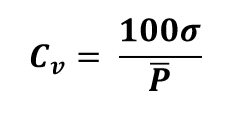DESIGN OF RAINGAUGE NETWORK
Optimum number of raingauges is always necessary to have a correct average rainfall.
According to Indian Standard (IS: 4987-1968) the following raingauge density is required.
1) In plains, 1 station/520 km²
2) In region of average elevation of 1000 m, station per 260-360 km²
3) Hilly areas with heavy rainfall, 1 station per 130km²
Number of rainfall stations, i.e., raingauge stations for an area to give necessary average rainfall with certain percentage error can be obtained from stastical consideration.
Following are the steps in the estimation of optimum number of raingauges
Step 1 :
Calculate total rainfall
where n is total number of existing raingauges in the catchment.
Step 2 :
Calculate mean rainfall
Step 3 :
Calculate the sum of the squares of all the rainfall of the gauges
Step 4 :
Calculate mean of squares
Step 5 :
Calculate sample standard deviation
Step 6 :
Calculate the coefficient of variation
Step 7 :
The optimum number of raingauges (N) can be obtained by the following equation :
Step 8 :
Addition number required = (N – n)







